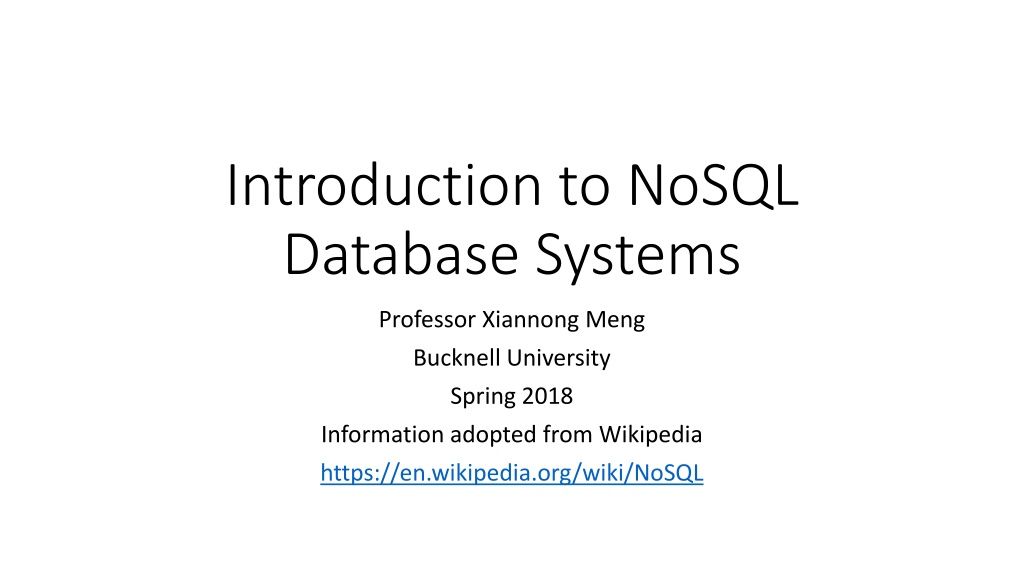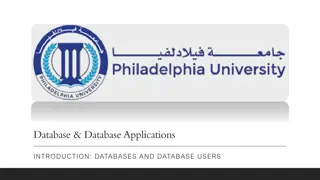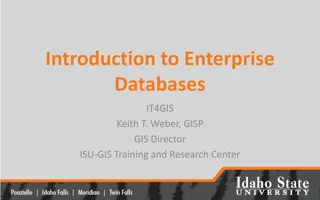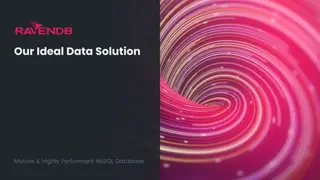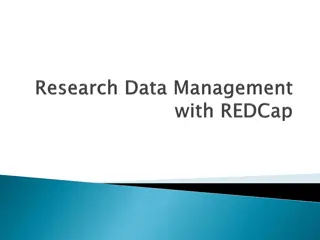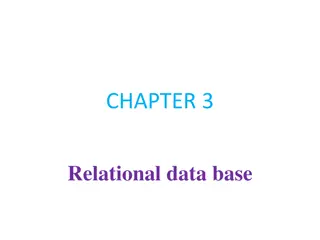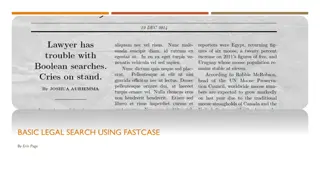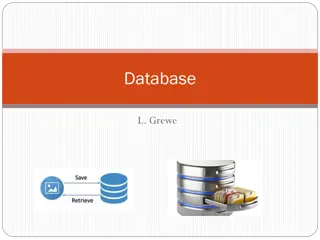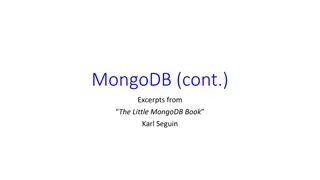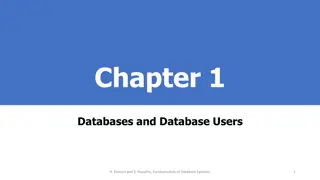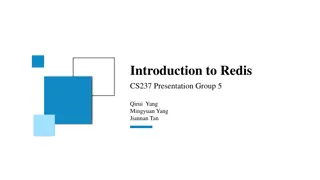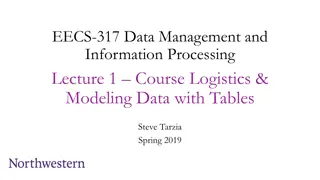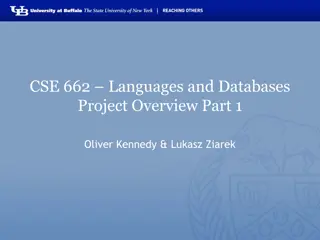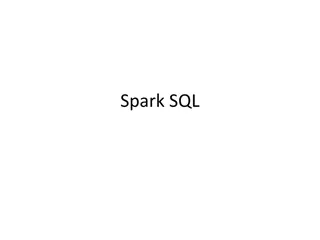Understanding NoSQL Databases in Modern Data Management
NoSQL databases offer innovative storage and retrieval mechanisms for diverse data types, deviating from traditional relational databases. This article explores the history, definition, advantages, challenges, and types of NoSQL databases, shedding light on their pivotal role in current data management landscapes.
Download Presentation

Please find below an Image/Link to download the presentation.
The content on the website is provided AS IS for your information and personal use only. It may not be sold, licensed, or shared on other websites without obtaining consent from the author. Download presentation by click this link. If you encounter any issues during the download, it is possible that the publisher has removed the file from their server.
E N D
Presentation Transcript
Introduction to NoSQL Database Systems Professor Xiannong Meng Bucknell University Spring 2018 Information adopted from Wikipedia https://en.wikipedia.org/wiki/NoSQL
History So far the databases we discussed are all SQL based (Structured Query Languages). SQLs work on relational databases, each of which consists of a collection of tables (relations). However, there are huge collection of information, especially on the web that do not fit into this model, e.g., documents, free texts, images, videos, and others. This is where NoSQL database comes to play a important role. The term was originated in the 60s, gaining wide popularity in the early 21stcentury as the needs of web 2.0 companies rise.
What is a NoSQL database? A NoSQL (originally referring to non SQL or non relational ) database provides a mechanism for storage and retrieval of data that is modeled in means other than the tabular relations used in relational databases (SQL databases). https://en.wikipedia.org/wiki/NoSQL
Why NoSQL databases? Motivations Simplicity of design Simpler horizontal scaling to clusters of machines (distributed systems) Finer control over availability Structural flexibility tailoring to different problems
Barriers for NoSQL databases Barriers for greater adoption of NoSQL databases Compromising consistency in favor of availability, partition tolerance, and speed; Use of low-level query languages instead of SQL; Lack of standard interfaces; Huge previous investments in existing relational databases.
Types and Examples of NoSQL Databases There are a variety approaches to classify NoSQL databases. What follows is a basic classification by data model. Column : A column of a distributed data store is a NoSQL object of the lowest level in a keyspace. It is a tuple consisting of three elements Unique name Value Timestemp https://en.wikipedia.org/wiki/Column_(data_store) Examples include Accumulo, Cassandra, Druid, HBase, Vertica.
Types and Examples Document database : A document-oriented database, or document store, is a computer program designed for storing, retrieving and managing document-oriented information. Document-oriented databases are one of the main categories of NoSQL databases, and the popularity of the term "document-oriented database" has grown with the use of the term NoSQL itself. XML databases are a subclass of document-oriented databases that are optimized to work with XML documents. Graph databases are similar, but add another layer, the relationship, which allows them to link documents for rapid traversal. Examples include Apache CouchDB, ArangoDB, BaseX, Clusterpoint, Couchbase, Cosmos DB, IBM Domino, MarkLogic, MongoDB, OrientDB, Qizx, RethinkDB
Types and Examples Key-value database : A data storage paradigm designed for storing, retrieving, and managing associative arrays, a data structure more commonly known today as a dictionary or hash. Examples include Aerospike, Apache Ignite, ArangoDB, Couchbase, Dynamo, FairCom c-treeACE, FoundationDB, InfinityDB, MemcacheDB, MUMPS, Oracle NoSQL Database, OrientDB, Redis, Riak, Berkeley DB, SDBM/Flat File dbm, ZooKeeper.
Types and Examples Graph database : A database that uses graph structures for semantic queries with nodes, edges and properties to represent and store data. Examples include AllegroGraph, ArangoDB, InfiniteGraph, Apache Giraph, MarkLogic, Neo4J, OrientDB, Virtuoso.
Types and Examples Multi-model database : A database model that supports multiple data models against a single, integrated backend. Examples include Apache Ignite, ArangoDB, Couchbase, FoundationDB, InfinityDB, MarkLogic, OrientDB.
MongoDB We will concentrate on one such example, MongoDB, a document- based database. We ll discuss the basic ideas of MongoDB We ll implement a MongoDB to support some basic information needs We ll also learn how to program MongoDB through Python
